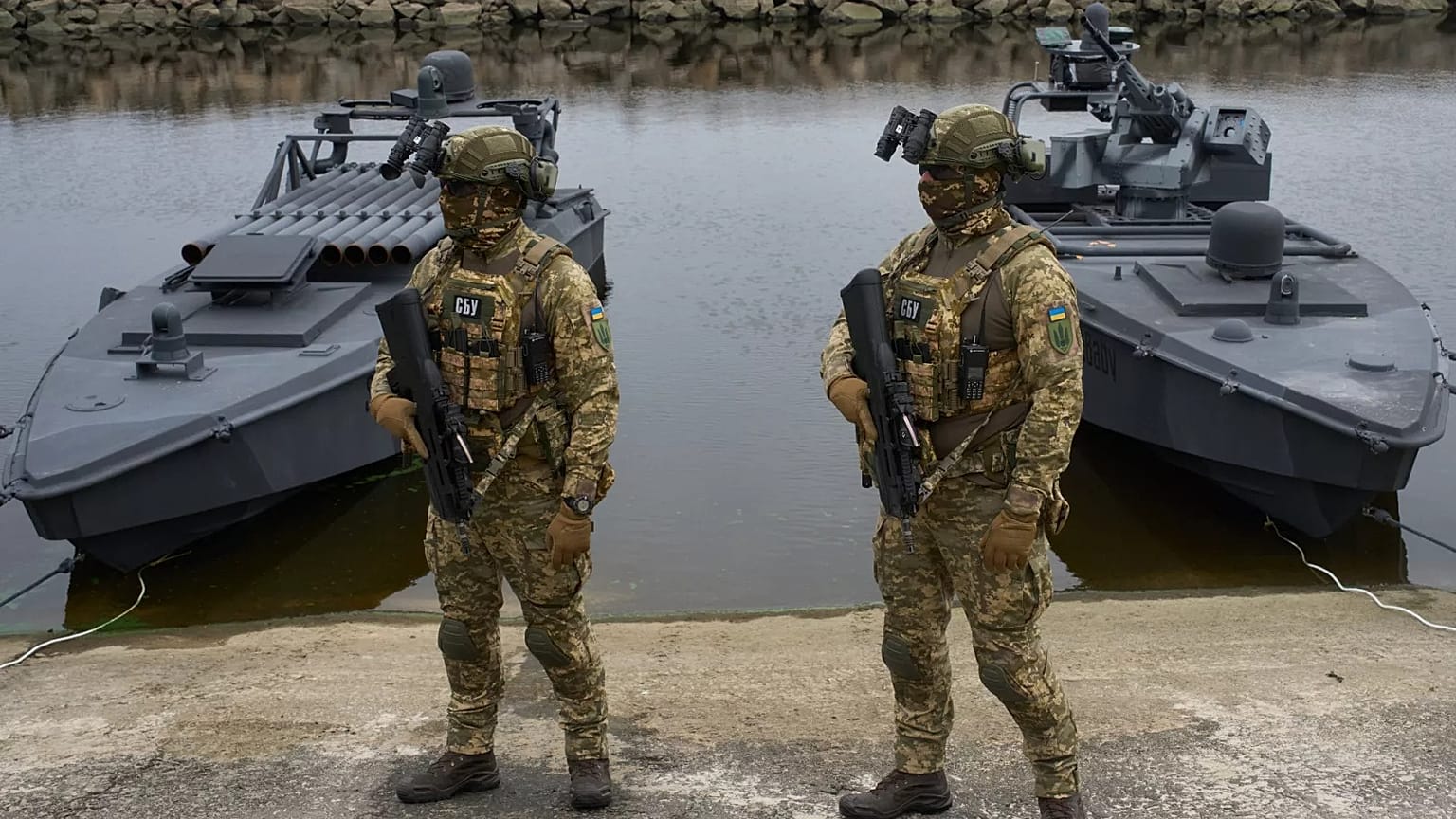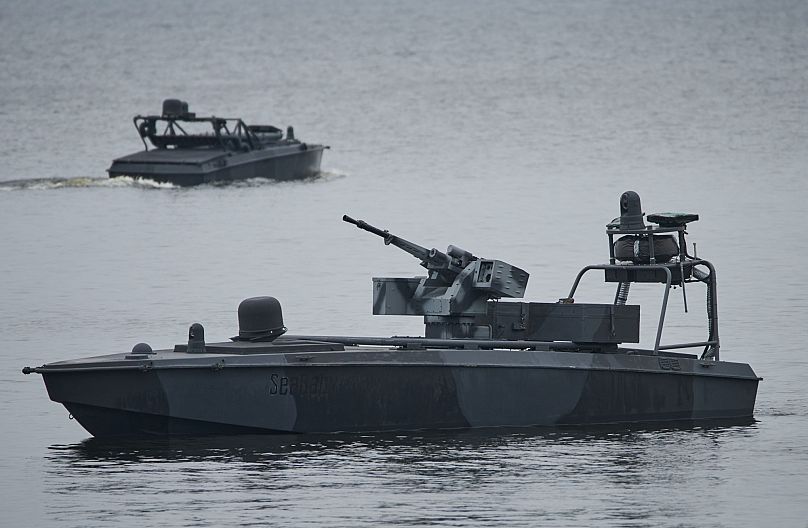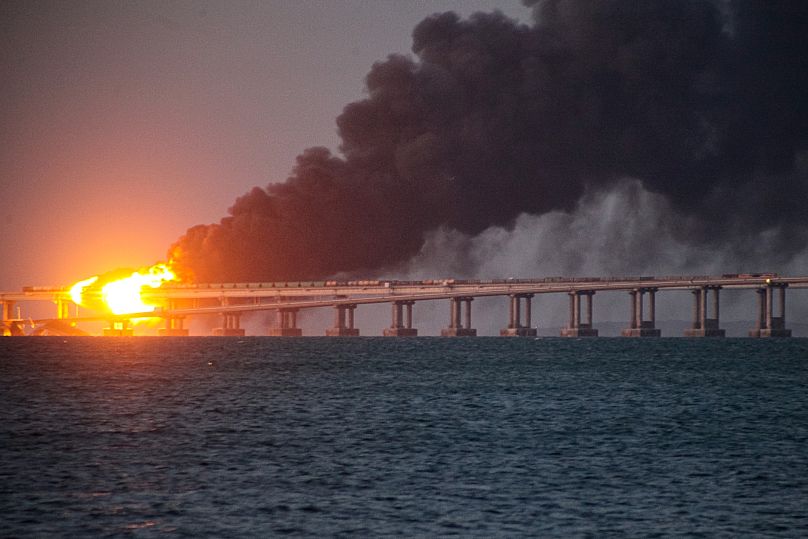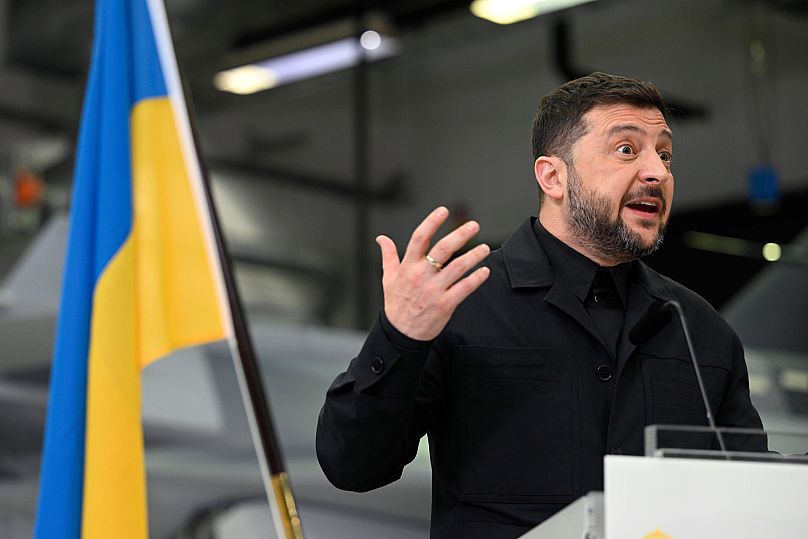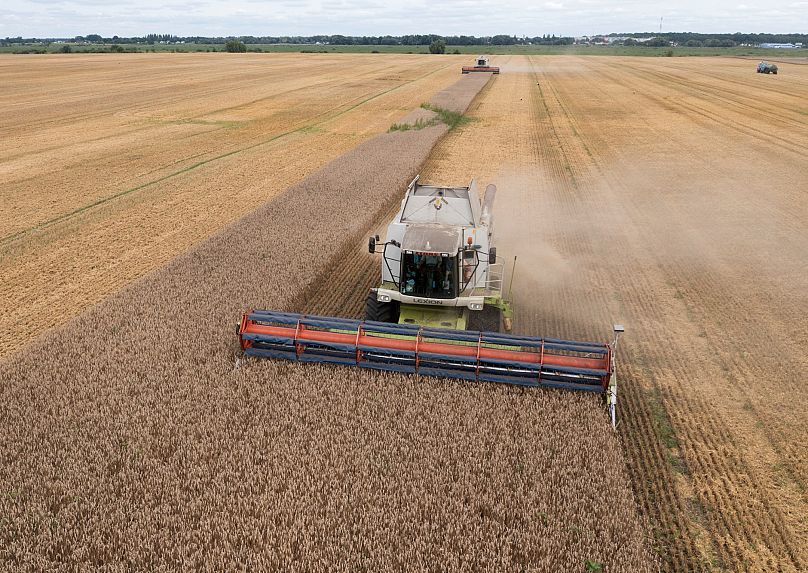The range of the "Sea Baby" has been expanded from 1,000 kilometres to 1,500 kilometres and it can carry up to 2,000 kilograms of payload.
Ukraine's state security service has unveiled an upgraded sea drone that it says can now operate anywhere in the Black Sea, carry heavier weapons and use artificial intelligence (AI) for more precise targeting.
Ukraine has already used the unmanned naval drones to target Russian shipping and infrastructure in the Black Sea.
The Security Service of Ukraine (SBU) has credited strikes by the unmanned vessel known as the "Sea Baby" with forcing a strategic shift in Russia’s naval operations.
The range of the "Sea Baby" has been expanded from 1,000 kilometres to 1,500 kilometres, SBU said, and it can carry up to 2,000 kilograms of payload.
At a demonstration attended by the media, variants included vessels fitted with a multiple-rocket launcher and another with a stabilised machine-gun turret.
Authorities asked that the time and location of the demonstration not be made public for security reasons.
SBU Brigadier General Ivan Lukashevych said the new vessels also feature AI-assisted friend-or-foe targeting systems and can launch small aerial attack drones and multilayered self-destruct systems to prevent capture.
A new kind of naval warfare
Drone strikes have been used in successful attacks against 11 Russian vessels, including frigates and missile carriers, SBU said, prompting the Russian navy to relocate its main base from Sevastopol in Crimea to Novorossiysk on Russia’s Black Sea coast.
"The SBU became the first in the world to pioneer this new kind of naval warfare — and we continue to advance it," Lukashevych said, adding that the "Sea Baby" has evolved from a single-use strike craft into a reusable, multi-purpose platform that expands Ukraine's offensive options.
The craft are operated remotely from a mobile control centre inside a van, where operators use a bank of screens and controls.
"Cohesion of the crew members is probably the most important thing. We are constantly working on that," said one operator who was identified only by his call sign, Scout, per Ukrainian military protocol.
Pushing back Russia's navy
The SBU also said sea drones helped carry out other high-profile strikes, including repeated attacks on the Crimea bridge, most recently targeting its underwater supports in a bid to render it unusable for heavy military transport.
The Kerch bridge is a key piece of Russian infrastructure illegally built by Moscow after its unilateral annexation of the Ukrainian peninsula in 2014.
The Sea Baby programme is partially funded by public donations through a state-run initiative and is coordinated with Ukraine’s military and political leadership.
The evolution from expendable strike boats to reusable, networked drones marks an important advance in asymmetric naval warfare, Lukashevych said.
"On this new product, we have installed rocket weaponry that will allow us to work from a large distance outside of the attack range of enemy fire. We can use such platforms to carry heavy weaponry," he said.
"Here we can show Ukrainians the most effective use of the money they have donated to us."
'Sea Baby' on sale?
Crucially, the upgraded "Sea Baby" drone is expected to be part of a package of weapons Ukraine could soon start selling to international partners.
At the UN General Assembly in September, Ukraine's President Volodymyr Zelenskyy announced that his country will begin exporting domestically produced weapons, lifting a restriction introduced when Kyiv declared martial law.
The export of Ukraine's domestic weapons has been heavily restricted since the beginning of Russia's full-scale invasion, with everything rolling off the production line diverted to the war effort.
But Ukrainian arms producers have been asking Zelenskyy for months to lift the restrictions on selling their domestically produced military-grade equipment, particularly drones, as a way to generate more money.
Ukraine has drawn up preliminary proposals for what Kyiv has defined as the "controlled export" of weapons, particularly sea drones, Zelenskyy said recently.
"The security of sea routes is an integral part of overall security and many nations depend on it. Ukraine offers all its reliable partners our developments, which have helped us in the Black Sea. We are counting on strong contracts," he explained.
Kyiv's naval drone fleet has been expanding in recent years and Ukrainian sea drones have proven effective in inflicting heavy losses on Russia’s military sites and ships in the Black Sea, such as the Magura-V5 drones, which have been used to target the Russian fleet.
Approximately 800 arms producers are currently operating in Ukraine, with more than 200 of them producing drones.
In most cases, these are adaptable and affordable systems which have reshaped modern warfare and, perhaps more importantly, Ukraine's military kit also has the advantage of being battlefield tested.
The Breadbasket of Europe
The Black Sea is a crucial waterway and transit point for Ukraine to export its grain to trade partners around the world.
Before the Russian full-scale invasion in 2022, Ukraine, known as the Breadbasket of Europe, regularly exported around 6 million tonnes of grain every month from its Black Sea ports.
When Russia invaded, it blockaded the Black Sea ports and grain exports collapsed sparking a global food security crisis.
But in July 2022, shipments of grain resumed under the Black Sea Grain Initiative, a deal mediated by the United Nations and Turkey.
But that success was short-lived with Russia exiting the pact a year later, claiming provisions in the deal covering its own exports of grain and fertiliser weren't being honoured.
Since then, Ukraine has continued to export grain along its own sea corridor established in July 2023.
That passes through the territorial waters of Turkey, Bulgaria and Romania but damage to port infrastructure from ongoing strikes in the Black Sea region has raised concerns about how effectively Ukraine can ship that grain.
Russia has repeatedly denied launching attacks on any civilian infrastructure in Ukraine.















